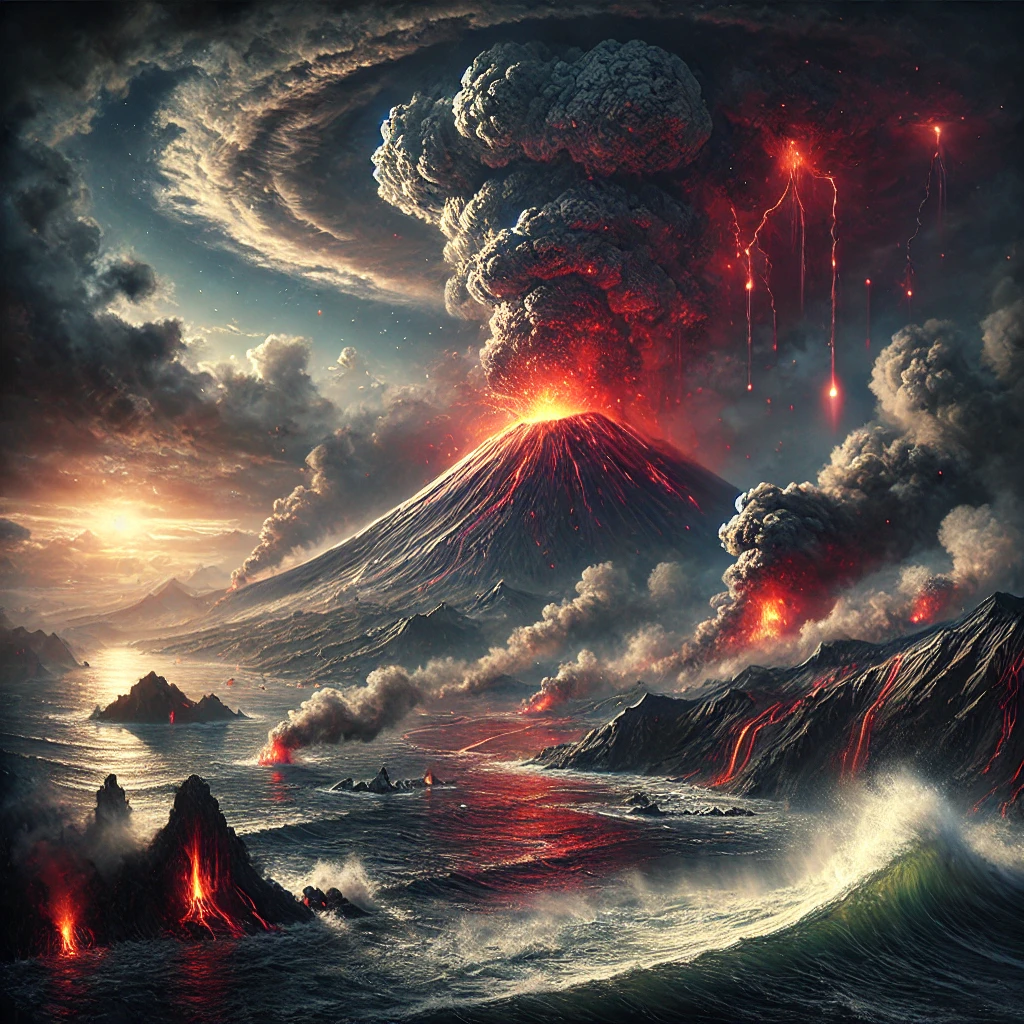The eruption of Krakatoa in 1883 is remembered as one of the most powerful and devastating volcanic events in recorded history. Located in the Sunda Strait between Java and Sumatra in Indonesia, Krakatoa’s explosion produced far-reaching impacts, from devastating tsunamis to climate changes and cultural shifts worldwide. This article delves into the causes, effects, and enduring legacy of Krakatoa’s eruption.
The 1883 Eruption: Unleashing Nature’s Fury
On August 26-27, 1883, Krakatoa erupted with such force that it was heard over 3,000 miles away, with reports comparing the sound to artillery fire. The eruption produced colossal ash clouds, fiery lava flows, and pyroclastic flows that obliterated the surrounding area. Ash plumes rose over 30 kilometers into the stratosphere, and the powerful eruption released massive amounts of sulfur dioxide and volcanic debris.
Tsunamis and Immediate Destruction
The eruption generated deadly tsunamis that surged across the region, causing devastation along coastlines in Java, Sumatra, and beyond. Waves reached as high as 130 feet in some areas, sweeping away villages and claiming an estimated 36,000 lives. The tsunamis triggered by Krakatoa’s collapse were some of the deadliest in recorded history, leaving a lasting impact on the region’s coastal communities.
Climate Change and Global Impact
Krakatoa’s eruption released vast quantities of volcanic ash and sulfur dioxide, which spread across the globe and blocked sunlight. This led to a temporary global cooling effect, causing temperatures to drop worldwide for several years. The ash in the atmosphere created vivid red and orange sunsets, famously captured by artists and described in literature. This climate disruption influenced agriculture, weather patterns, and even inspired scientific curiosity about the atmosphere and climate.
Cultural and Scientific Legacy
The eruption of Krakatoa inspired a wave of scientific research and advancements in volcanology. It led to the establishment of international volcanic observation networks, aimed at predicting and monitoring future eruptions. In popular culture, the eruption sparked curiosity about the power of nature, influencing literature, art, and media for generations.
Lessons from Krakatoa
The eruption of Krakatoa underscored the importance of understanding and respecting natural hazards. It led to better disaster preparedness and response systems, especially in tsunami-prone regions. Today, volcanologists study Krakatoa as a case study in super eruptions, using lessons from 1883 to advance early warning systems and improve resilience to future volcanic events.
Conclusion
Krakatoa’s 1883 eruption remains a profound example of nature’s transformative power, reshaping the world’s understanding of volcanic hazards. Its impacts on climate, culture, and science continue to echo through time, reminding us of the delicate balance between human civilization and the forces of nature.

